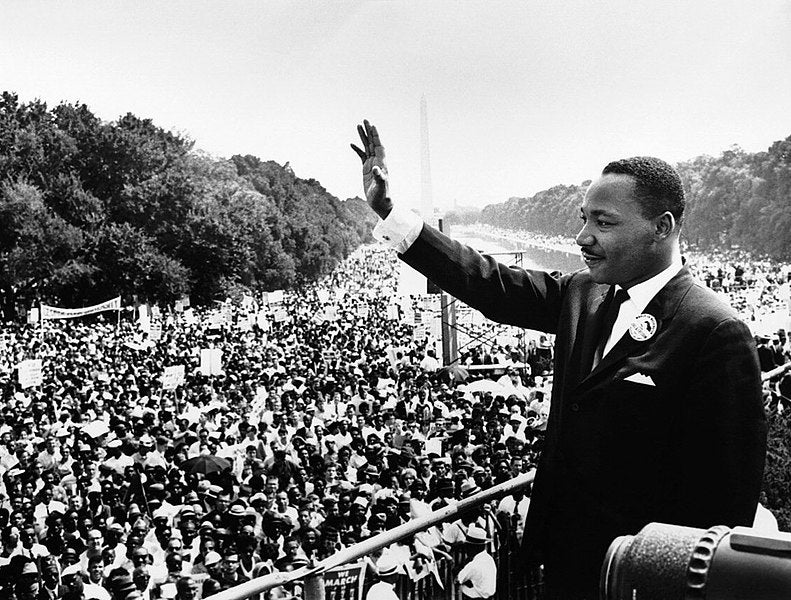Latino and African American households have about one tenth of the wealth of white households – and this wealth gap hurts minorities when they enter the business sector. Although rates of business ownership among African Americans and Latinos have been growing during the past decade, their firms remain smaller and less likely to survive than those owned by white entrepreneurs.
How can we address this inequity?
Marla Bilonick, executive director of the Latino Economic Development Center, sees major challenges for people of color who want to become entrepreneurs. First, she says, is simply that the wealth that could be used to finance new ventures is not there. In Washington, DC, for example, between 2009 and 2013, the median income of non-Hispanic whites was over 89 percent greater than that of non-white households.
“It’s not that the drive is not there. But all of the income is being used to cover basic needs – there’s no pot of money sitting there to be invested in a new business,” Bilonick said.
Not having wealth makes it hard to access capital to fund a business. “If you have a tenth of the wealth level to invest, then the people around you also have lower wealth to invest. Banks will look at you and say that you don’t have enough skin in the game to manage debt, so you don’t even get to leverage your own money,” said Alicia Robb, senior fellow at the Ewing Marion Kauffman Foundation.
In addition to simply not having the capital for an initial business, entrepreneurs of color are often deterred by lack of access to networks and information barriers. Beginning and growing a business often require knowledge of how to “work the system” and a network that can help to show the way, both formally and informally. For immigrant communities and people of color, these networks are often not there. Black and Latino entrepreneurs may face covert discrimination in lending practices. And some members of immigrant communities face additional language barriers.
Veronica Davis, CEO of Nspiregreen, saw these factors at play when she co-founded her own business in 2009. With her business partner, Davis aimed to start a sustainability firm to empower communities to become more environmentally friendly – whether that be “green” infrastructure, increasing access to clean water, or streamlining urban planning. Essentially, she was asking: “How do we have community-driven solutions? How do I make your community work better for you in the ways that you want to see in the future?”
Though the duo had assets – retirement savings, good credit, and homes – they found themselves struggling to get capital from loans. Eventually, they self-funded their entire business, which worked for the first two years. But in 2011, having invested their savings and fully tapped out their credit cards, their credit scores had taken a hit and they faced the prospect of not being able to meet their cash flow needs. Davis and her partner reached out to the Washington Area Community Investment Fund, which provided them with loans to keep their business afloat. They have grown and expanded since then, but Davis says that, “We still struggle to get the attention of large banks – even though we have a proven company.”
Despite the difficulties that African American and Latino entrepreneurs face, there are ways that businesses and policymakers can lower the barriers. One of the most important things, says Robb, is good data on how to help entrepreneurs of color succeed – and how it helps their communities. This data can help to show that there are unmet credit needs and deferential treatment for businesses by race, or help to design programs and policies that are more effective.
“Banks are risk-averse … How are we supposed to create policy and programs when we don’t have the data to understand the current situation?” asked Robb.
This data can fuel effective policy interventions to incentivize venture capital investments in minority-owned firms, said Maya Rockeymoore, president and CEO of Global Policy Solutions. Global Policy Solutions recommended a proposed tax credit for venture capital entities if they invest in minority-owned firms. She says that conversations regarding government subsidy of entrepreneurs of color into business ownership are also on the table, like a tax credit for low-income, first-time entrepreneurs just like first-time home ownership.
Rockeymoore noted that it is also crucial that entities which provide loans and services to business owners should reach out to educate entrepreneurs of color about their presence and services. Data shows that most Latinos don’t even know that these services exist, she said. And in those services, it is crucial to understand the cultural differences of the communities that entities are working in.
“It can be a mismatch,” Rockeymoore said. “There’s a lack of knowledge and outreach that we need to improve on both sides of the coin.”
Bilonick agreed, noting that her organization, the Latino Economic Development Center, aims to permeate the community that they serve, and partners with groups like churches, health clinics, or schools in the community to build ties with local organizations. She also hires staff who are bilingual and from minority communities, and in the board of directors and leadership team of her organization, 100 percent of members are from a racial or ethnic minority group.
“We create jobs in the communities we serve,” she said. “The ultimate ability to connect is to relate to someone across the table. It has to be with someone who understands you. You need to have that connection.”
This conversation took place at Business Ownership and the Racial Wealth Gap: Expanding the Growth of Minority-Owned Firms, through the Economic Opportunities Program.

